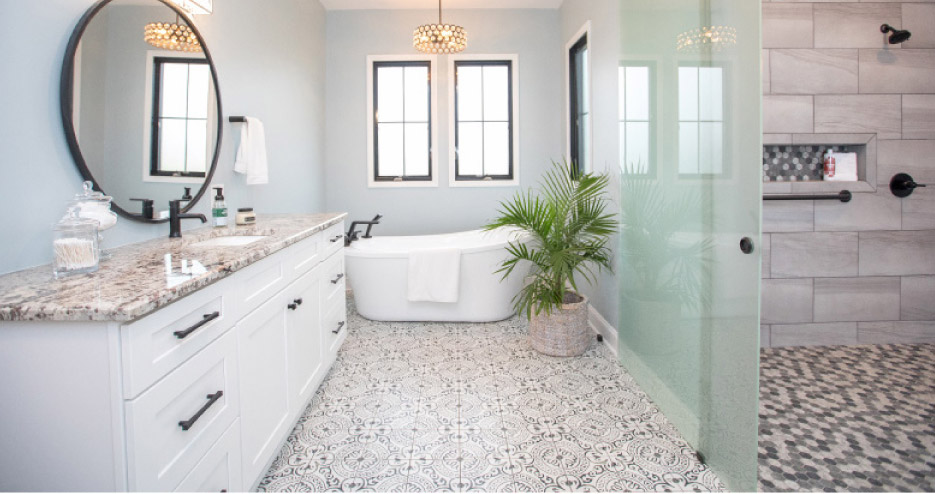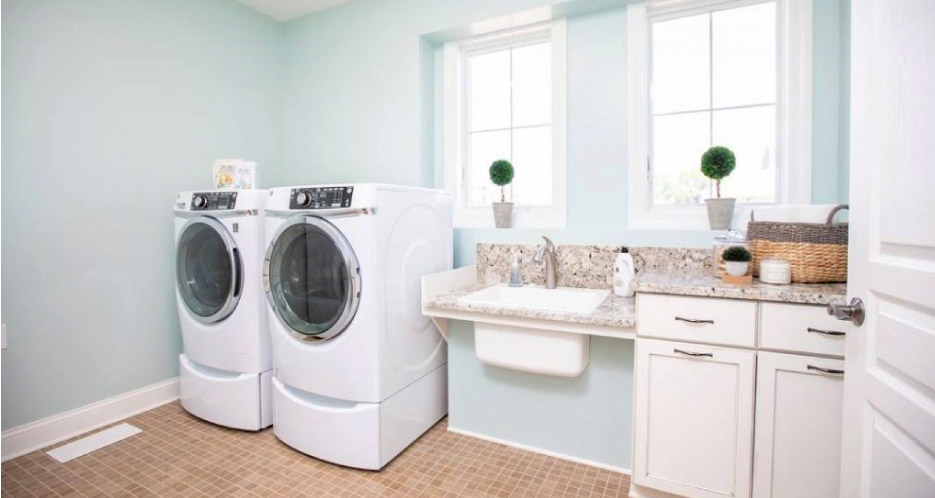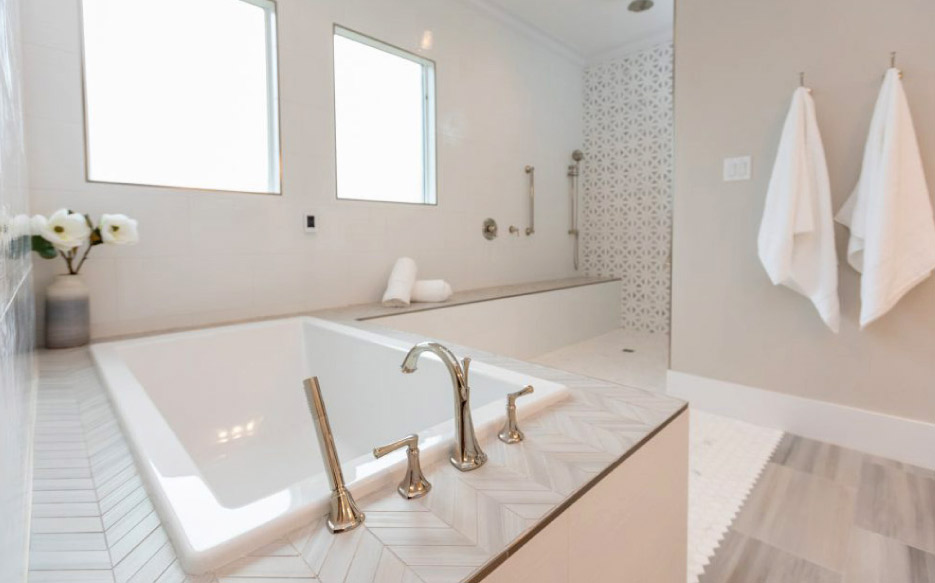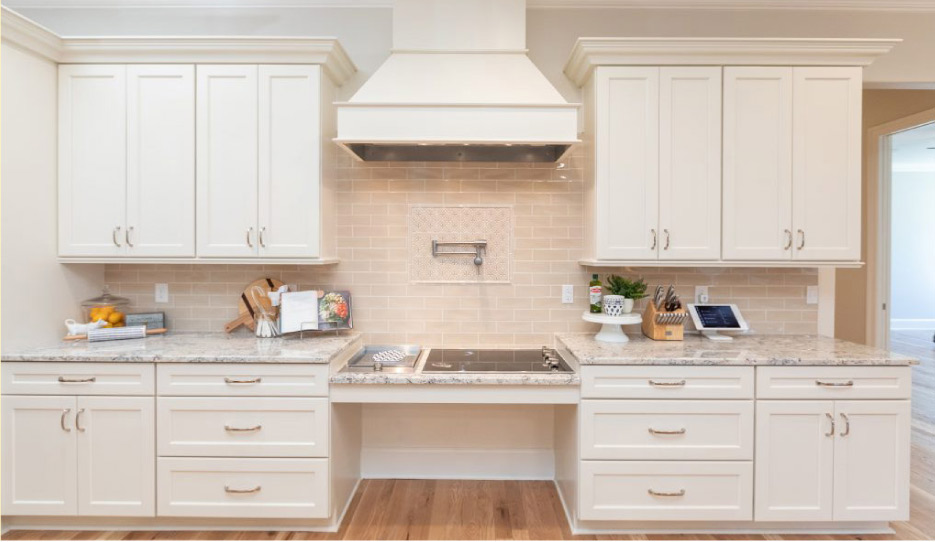How Natural Stone is Elevating Universal Design and Aging in Place Spaces
 Megy Karydes
Megy Karydes
usenaturalstone.com
All photos courtesy of the Gary Sinise Foundation. Learn more about the Foundation and its R.I.S.E. (Restoring Independence Supporting Empowerment) program at GarySiniseFoundation.org/RISE.
Many older adults prefer to stay in their homes as they age and research studies support that they prefer to be surrounded by familiar routines and a community in which they feel connected. Aging in place, as the term is commonly referred, is linked to greater health and happiness among older adults, and there are a number of benefits, from it costing less than assisted living facilities to slowing the advancement of memory loss. Interior designers and architects are beginning to incorporate universal design into their plans and many are finding natural stone is a great way to soften the look of the space with its earthy colors and tones while creating accessible environments for everyone.
What Is Universal Design?
“Universal design is a set of standards that encompasses all persons,” says Katherine Kawaguchi and co-owner and lead designer of Roseville, California-based GUCHI Interior Design.
Whether the homeowner has a pet or toddler, or someone needs to be able to sit in the shower due to a skiing accident or recovering from hip replacement surgery, a curb-less shower works and using natural stone can elevate the look of that space, according to Kawaguchi.
“I just spoke from the beginning stages of homeownership to the end stages of homeownership,” she adds. “Universal design is creating a space that everyone can use and there are no barriers to anyone.”
Planning Today for Tomorrow’s Needs: Universal Design for Everyone
One space in particular is critical when it comes to designing with this set of standards: the bathroom. Everyone needs a functional bathroom and if you can’t use it, you won’t be able to stay in that home. Homeowners may be able to bring in someone to help with the cleaning and even the cooking, but we all need a usable bathroom.
“What happens if you have a fall or something happens to you a day or a month after you’ve installed that brand new, maybe $50,000 bathroom, and you can’t use the shower?” Kawaguchi asks. So even if clients hire her to work on other parts of the house, she always recommends they at least look at the master bathroom.
Natural stone is often her go-to material for bathrooms and she’s very deliberate and intentional with how she incorporates it into the overall design.
“I think there’s nothing that is more beautiful than a beautiful piece of granite or quartzite,” she shares. Natural stone, she adds, commands a room. Unlike other materials a designer or architect can use in a bathroom, natural stone is sustainable, durable, and high quality. In a bathroom setting in particular, the natural and earthy elements of stone also lend a wellness atmosphere since the material brings the outdoors in.
In addition to using natural stone on countertops, Kawaguchi will use the material to create a shower bench seat or find other interesting ways to incorporate it, like as a shelf.
 |
|
No-Curb showers provide access for wheelchairs and also an aesthetic solution in universal bath design. |
What to Consider When Using Natural Stone in Universal Design Projects
For homeowners who want to use natural stone on floors, whether it’s in the bathroom or in the kitchen, Madeleine Dymling, president of New York-based Flatbrook & Co, often recommends choosing a finish that will make the stone less slippery, such as honed or hammered.
Another thing to consider is the size of the stone tiles being used.
“Some say that the more grout lines you have makes it less slippery, however one has to consider cleanability,” Dymling explains. Many of her clients tend to choose less grout lines for the ease of maintenance, so opt for larger tiles.
 |
|
Universal design includes a lower or unhindered access to countertops and appliances. |
 |
 |
Selecting Natural Stone for Universal Design Projects
While Dymling is happy to recommend natural stone options to clients, she recognizes that many homeowners enjoy the experience of selecting their stone. Dymling and her team prefer honed natural stone materials and often use mosaic floors for shower applications.
If a client is unsure of what type of natural stone they want, Kawaguchi will start the conversation by asking them what might resonate with them. Perhaps it’s the different color options available in granite or how the stone will be used within the design. Once she has a general idea of what they might be drawn to, they’ll review their available options.
Whether it’s a remodel or new build, a homeowner still needs to take into consideration what adjustments will need to be made to make the design work for aging. While it might be more costly to install a curb-less shower today, for example, it’ll be less costly in the long-run since the design means the homeowner won’t need to modify it to accommodate different needs later in life.
In many cases, universal design can help increase a home’s value for two reasons: it allows the homeowner to stay in their home longer, increasing the equity in their home, and the modifications make life easier at home, which helps come resale time since it broadens the market base.
Kawaguchi recognizes most clients asking for designs that can accommodate mobility challenges tends to be an older population but she insists it shouldn’t be limited to a mature audience. Universal design needn’t look institutional and using materials like natural stone, with its timeless beauty and rich textures, allow homeowners and designers to create a design that will work for today’s needs and tomorrow’s, too.
Since building or remodeling any part of a home, especially a bathroom or kitchen, takes a fair amount of time, money, and effort, it makes sense to plan ahead and incorporate universal design principles. These principles are not only suited for the needs of an aging population but take into consideration a family’s needs at all stages of life.
Megy Karydes is a Chicago-based writer. Find her at MegyKarydes.com .